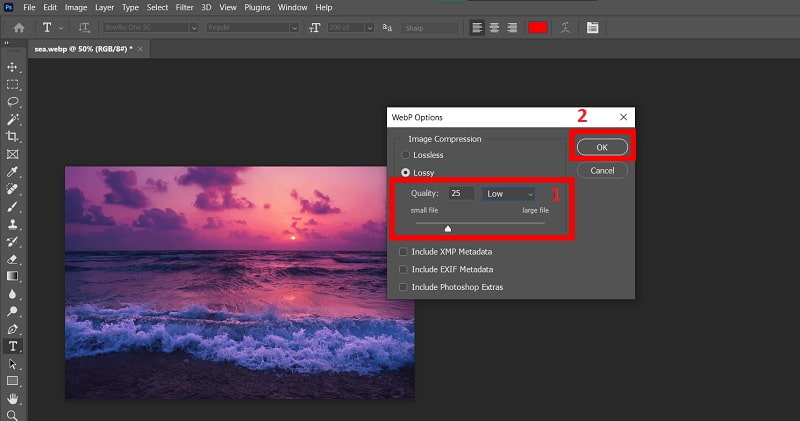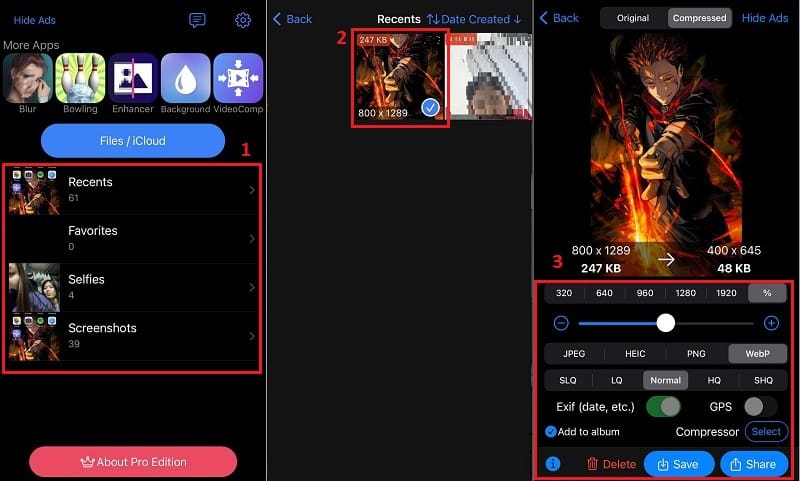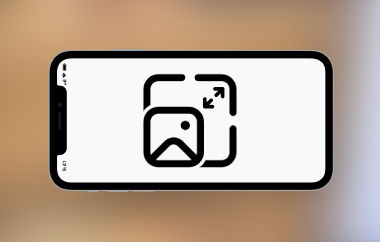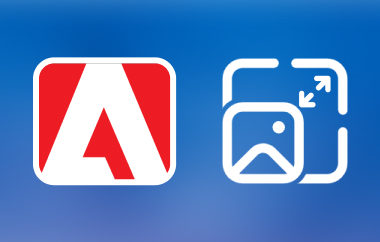Are you a web developer striving for faster page loading times or a content creator who wants to optimize your media assets? Or are you seeking to save storage space on your devices? In that line, a good image compressor can be a game-changer for you. WebP is an image format concocted by Google that delivers superior lossless compression. This image format entitles websites to display high-quality images with much smaller file sizes than standard formats like PNG and JPEG. Even with this, if you want to compress WebP with a smaller file size without losing quality, you can follow this guide.
Part 1. How to Compress WebP Image on Windows and Mac
1. AVAide Image Compressor
One of the finest programs you can utilize to compress an image WebP is AVAide Image Compressor. It is an adaptable image compressor that enables users to reduce or downsize an image. Since this is a web-based tool, it is available for Windows and macOS. The tool comes with a user-friendly interface, enabling creators to navigate it easily. With this online tool, content creators can save significant storage space and improve website loading time. That said, this will allow viewers to stay on their pages as the image can attract and engage visitors to a visually appealing website. You can see the detailed instructions below for compressing WebP images online.
Step 1Visit the WEbP Compressor
The initial walk-through you can do is to visit the main page of the best WebP compressor. Once you are on the platform, you can see the tool's intuitive interface.
Step 2Upload the Image to Compress
To start compressing, click the + button to upload or import the image you wish to compress. Alternatively, you can use the tool's drag-and-drop feature to swiftly improve the process. Subsequently, a window will pop up for you to explore your files, choose the image you need to compress and click Open.

Step 3Download the Compressed WebP
When you upload the image on this tool, this image WebP compressor will automatically analyze and compress the image. Click the blue Download All button to save the compressed image to your local drive. Once the compressed image is saved to your local drive, you can use it on your website or any other platform to optimize file size.

- Pros
- Users can compress various images aside from Webp.
- The tool supports batch processing for a convenient compression of multiple photos.
- It compresses images without sacrificing the original image quality.
- The platform prioritizes the user's security, ensuring all uploaded images are protected and kept confidential.
- Cons
- Since it is an online tool, it mainly relies on your internet connection.
2. Adobe Photoshop
Another WebP optimizer you can use is Adobe Photoshop. It is a widely used software that offers diverse compression options. This compression feature includes the ability to save images in the WebP format. This is a helpful image compressor software for web developers or designers who need to reduce the size of their pictures. Further, it provides convenient features like batch processing that authorize users to compress multiple images simultaneously. Here is a quick guide on how you can compress an image in Photoshop:
Step 1Open your Adobe Photoshop on your desktop and open the WebP image you want to compress. You can pick the image quality of your image. If you don't want to lose the quality of the image, you can use the Lossless option, but if you can compromise the quality, you can pick Lossy.
Step 2Afterward, save the image you have compressed. You can do this by accessing File and clicking Save As. Choose WebP from the Format dropdown menu in the Save As dialog box.

- Pros
- It provides control over both lossy and lossless WebP compression.
- It has a Preview function that lets you see the impact of different compression settings on the image quality before saving it.
- It delivers a comprehensive suite of editing tools and features besides compressing.
- Cons
- Since the tool offers different tools and plugins, it can present a steep learning curve for beginners.
- It is available through a subscription-based model, requiring users to pay before editing or compressing a file.
Part 2. How to Compress Images on iPhone and Android
1. Shrink Media
If you want to compress an image in WebP format on your Android phone, you can use the mobile application Shrink Media. Pixelbin, a renowned team of Android utility tools, developed this mobile image compressor. Shrink Medida uses modern AI technology to analyze pictures smartly and compress their size significantly. Moreover, this application offers options to resize images and maintain image quality during WebP compression. Underneath are the steps you can observe to compress the WebP image file.
Step 1First, obtain the tool from the Play Store and install it on your Android smartphone. Then, upload the image you want to compress.
Step 2Adjust the photo quality and dimensions by sliding the buttons underneath each option. Then, click the Download button to keep the WebP on your mobile device.

- Pros
- Aside from Webp, it also supports converting other image formats such as JPG, HEIC, JPEG, and PNG.
- Users can access this mobile application without demanding a long registration process.
- It can operate offline, allowing users to compress images without an internet connection.
- Cons
- Running this application on a lower version of Android can lead to slow processing time.
2. Easy Photo Compressor
If you are an iPhone user, you can employ the Easy Photo Compressor app. This iPhone app facilitates photo management by showcasing elements for compressing, resizing, and organizing your images. Users can reduce the file size of an image to save storage space on their iOS devices. This also allows them to meet the specific requirements for social media platforms or email attachments. With this iPhone image compressor, users can save time and effort by downsizing the file size of their WebP photos. A simple guide is below to reduce WebP file size.
Step 1Get the application by opening your App Store and saving it on your iPhone. Then, allow access to the application to detect your photos on your device.
Step 2Once you access it, you will see your photos on the application's interface. From here, select the photo you want to compress. Finally, select the quality and format of your image, then click the Save button.

- Pros
- Apart from the iPhone, users can use it on different iOS devices like the iPad and iPod Touch.
- It gives users the option to share compressed photos.
- Cons
- The application contains ads that can hinder the user's experience.
Part 3. FAQs about Compressing WebP Images
How do I convert WebP without losing quality?
There are several methods for converting WebP images without losing their quality. You can utilize a web-based tool, like AVAide Image Converter. Also, try software on your computer and an application for mobile devices. Suppose you want to keep the highest quality without downloading another tool. In that case, you can employ the AVAide Image Compressor to reduce an image size.
What is the best compression level in WebP?
Your specific needs always determine the ideal WebP compression level of an image. If maintaining the best possible image quality is your top priority, you can use a lower compression setting. This will result in higher image fidelity, but file sizes will increase. In any case, you can select stronger compression if you want to minimize file size, giving up some image quality in exchange for faster loading times and more effective storage.
Why is WebP bigger than JPEG?
WebP can sometimes be bigger than JPEG. This is because of factors such as the compression settings used, the complexity of the compressed image, and the presence of transparency or animation in the image. While JPEG is a widely used image format with good compression, WebP is a newer and more advanced format with different compression algorithms.
To conclude, WebP delivers an exceptional image file format for websites because it maintains a good quality at smaller file sizes than JPEG. This results in quicker loading times and enhanced user experience. However, you must note that the ideal compression level will always depend on your priorities or preferences, such as image quality and file size. By leveraging these tools and understanding the factors affecting WebP compression, you can optimize your images for a faster, more engaging web presence.

Reduce the file size of an image online within seconds while preserving the quality. We support JPG, PNG, WEBP, GIF, and more.
TRY NOW



